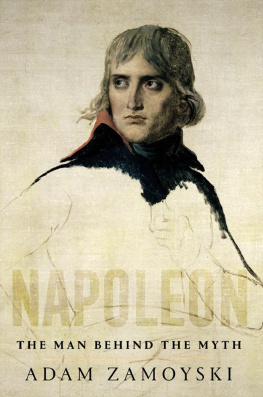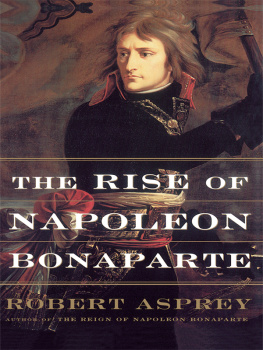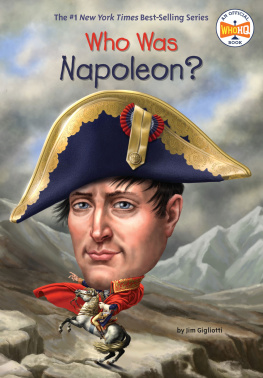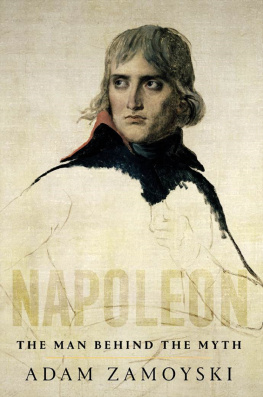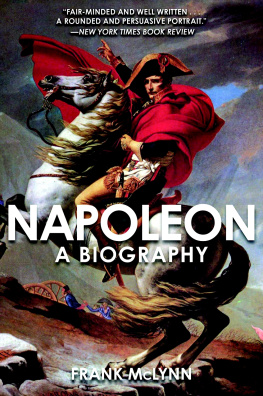William Collins
An imprint of HarperCollinsPublishers
1 London Bridge Street
London SE1 9GF
www.WilliamCollinsBooks.com
This eBook first published in Great Britain by William Collins in 2018
Copyright Adam Zamoyski 2018
Cover photograph Getty Images
Adam Zamoyski asserts the moral right to be identified as the author of this work
Maps by Martin Brown
A catalogue record for this book is available from the British Library
All rights reserved under International and Pan-American Copyright Conventions. By payment of the required fees, you have been granted the non-exclusive, non-transferable right to access and read the text of this e-book on-screen. No part of this text may be reproduced, transmitted, down-loaded, decompiled, reverse engineered, or stored in or introduced into any information storage and retrieval system, in any form or by any means, whether electronic or mechanical, now known or hereinafter invented, without the express written permission of HarperCollins.
Source ISBN: 9780008116071
Ebook Edition October 2018 ISBN: 9780008116088
Version: 2018-08-28
In memory
of
GILLON AITKEN
Contents
Napoleons mother Letizia Bonaparte in 1800, by Jean-Baptiste Greuze. (Granger Historical Picture Archive/Alamy Stock Photo)
Two sketches of Bonaparte by Jacques-Louis David. (Sketches of Napoleon Bonaparte, 1797 (pencil), David, Jacques-Louis (17481825)/Muse dArt et dHistoire, Palais Massena, Nice, France/Bridgeman Images)
Bonaparte during the Italian campaign of 1796, by Giuseppe Longhi. (Paul Fearn/Alamy Stock Photo)
Bonaparte leading his troops across the bridge at Arcole, by Antoine-Jean Gros. (Photo by Universal History Archive/Getty Images)
Bonaparte in 1797, by Francesco Cossia. (Photo by Fine Art Images/Heritage Images/Getty Images)
Josephine Bonaparte in 1797, by Andrea Appiani. (ART Collection/Alamy Stock Photo)
Auguste Marmont, by Georges Rouget. (Wikimedia Commons)
Andoche Junot, by David. ( President and Fellows of Harvard College)
Joachim Murat. (ART Collection/Alamy Stock Photo)
Josephines son Eugne de Beauharnais, by Gros. (Hirarchivum Press/Alamy Stock Photo)
Napoleons younger sister Pauline, by Jean Jacques Thrsa de Lusse. (flickr/lost gallery/Pauline Bonaparte, Princess Borghese/De Lusse/CC by 2.0)
Bonaparte visiting plague victims at Jaffa during his Syrian campaign, by Gros. (Photo by Archiv Gerstenberg/ullstein bild via Getty Images)
Joseph Bonaparte. (Photo by Stefano Bianchetti/CORBIS/Corbis via Getty Images)
Jean-Baptiste Bernadotte, by Nicolas Joseph Jouy. (Heritage Image Partnership Ltd/Alamy Stock Photo)
Napoleons younger brother Lucien, by Franois-Xavier Fabre, c.1808. (ART Collection/Alamy Stock Photo)
Bonaparte in 1800, by Louis Lopold Boilly. (Napoleon Bonaparte (17691821) Premier Consul (oil on canvas), Boilly, Louis Lopold (17611845)/Private Collection/Archives Charmet/Bridgeman Images)
The house in the rue de la Victoire. (Photo 12/Alamy Stock Photo)
The Tuileries, c.1860. (Photo by LL/Roger Viollet/Getty Images)
Jean-Jacques-Rgis Cambacrs, by Greuze, 1805. (Cambacrs/Photo CCI/Bridgeman Images)
Charles-Maurice de Talleyrand in 1804, by David. (Photo Josse/Leemage/Corbis via Getty Images)
Joseph Fouch. (Portrait of Joseph Fouch (17591820) Duke of Otranto, 1813 (oil on canvas), French School, (19th century)/Chteau de Versailles, France/Bridgeman Images)
Josephines daughter Hortense de Beauharnais, by Franois Grard. (Paul Fearn/Alamy Stock Photo)
The Chteau of Malmaison, by Henri Courvoisier-Voisin. (Photo Josse/Leemage/Corbis via Getty Images)
Napoleons younger brother Louis in 1809, by Charles Howard Hodges. (Photo by Fine Art Images/Heritage Images/Getty Images)
Napoleon crossing the Alps in 1802, by David. (Photo by GraphicaArtis/Getty Images)
The Emperor Napoleon I in 1805, by David. (Photo Josse/Leemage/Corbis via Getty Images)
A fragment of Davids painting of the coronation, showing Joseph, Louis, Napoleons three sisters, Hortense and her son Napolon-Charles. (Photo Josse/Leemage/Corbis via Getty Images)
Napoleons youngest brother Jrme, 1805. (Courtesy of the Maryland Historical Society, xx.5.52)
Napoleon at Eylau, by Gros (Photo by Universal History Archive/Getty Images)
Marshal Jean Lannes, by Grard. (Photo by Fine Art Images/Heritage Images/Getty Images)
General Armand de Caulaincourt, sketched in 1805 by David. (Portrait of Armand Augustin Louis. Marquis de Caulaincourt (17721827) (pencil on paper) (b/w photo), David, Jacques Louis (17481825)/Muse des Beaux-Arts, Besancon, France/Bridgeman Images)
General Graud-Christophe Duroc, by Anne-Louis Girodet-Trioson. (Portrait of Duroc, Grand Marshal of the Palace (oil on canvas), Girodet de Roucy-Trioson, Anne Louis (17671824)/Muse Bonnat, Bayonne, France/Bridgeman Images)
Napoleon I in 1806, by Jean-Auguste-Dominique Ingres. (Photo Josse/Leemage/Corbis via Getty Images)
View of the proposed palace for the King of Rome, by Pierre-Franois Fontaine. (From Projets darchitecture, plan number 32, France, 19th century/De Agostini Picture Library/Bridgeman Images)
Napoleon en famille, by Alexandre Menjaud. (Napoleon I (17691821), Marie Louise (17911847) and the King of Rome (181173) 1812 (oil on canvas), Menjaud, Alexandre (17731832)/Chteau de Versailles, France/Bridgeman Images)
Napoleon in early 1812, by David. (Photo by Ann Ronan Pictures/Print Collector/Getty Images)
Napoleon on the bridge of HMS Bellerophon, by Charles Lock Eastlake, 1815. (Granger Historical Picture Archive/Alamy Stock Photo)
The house at Longwood on St Helena, where Napoleon spent his last years. (Photo by The Print Collector/Getty Images)
Napoleon on St Helena, 1820. (Paul Fearn/Alamy Stock Photo)
Europe in 1792
Toulon
The Italian theatre
Montenotte
Lodi
The pursuit
Castiglione
Wrmser outmanoeuvred
Arcole
Rivoli
The march on Vienna
The settlement of Campo Formio
Egypt
Europe in 1800
Marengo
Ulm
Austerlitz
The campaigns of 180607
Europe in 1808
AspernEssling
Wagram
Europe in 1812
The invasion of Russia
Borodino
The Berezina
The Saxon campaign, 1813
The defence of France in 1814
The Waterloo campaign
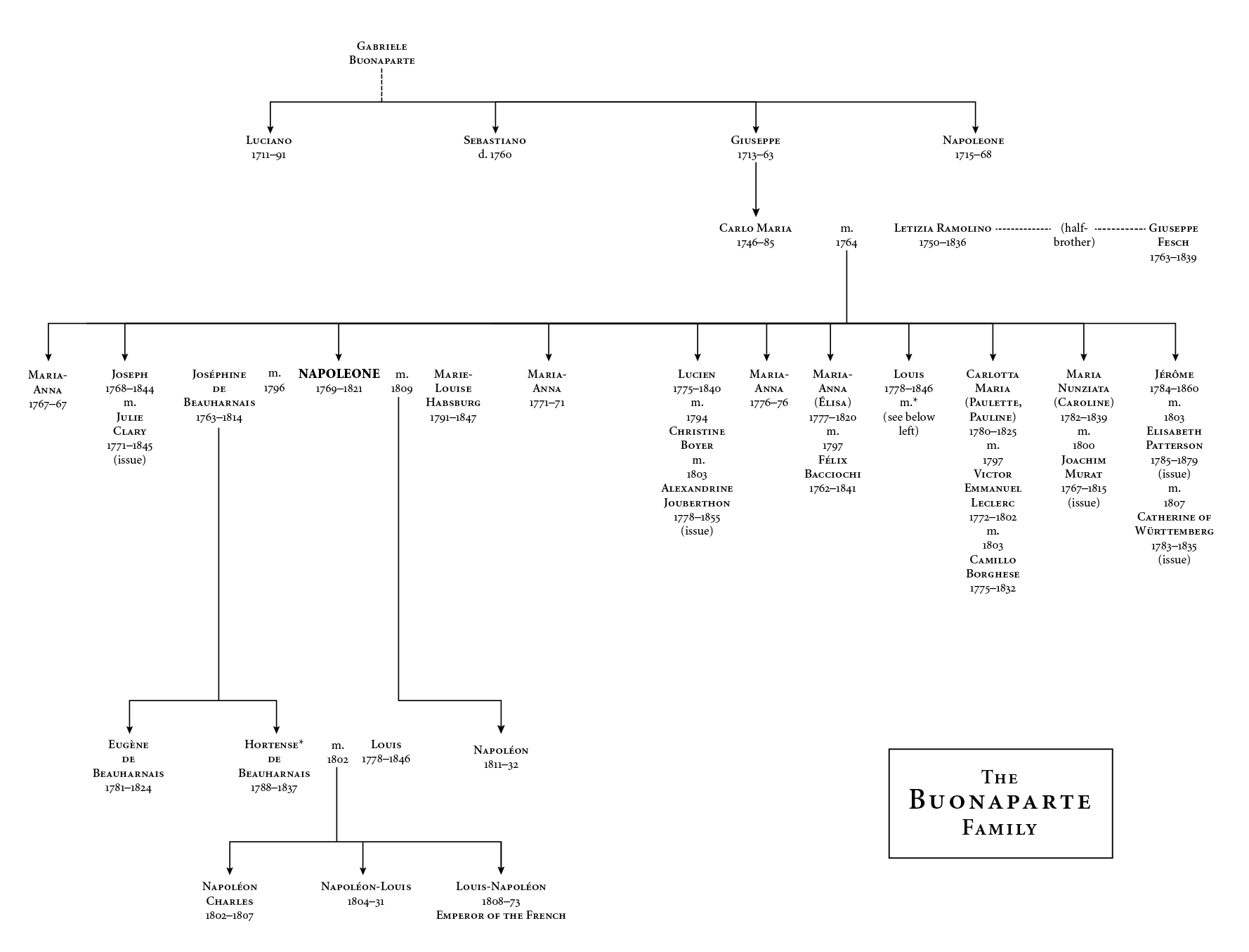

A Polish home, English schools, and holidays with French cousins exposed me from an early age to violently conflicting visions of Napoleon as godlike genius, Romantic avatar, evil monster or just nasty little dictator. In this crossfire of fantasy and prejudice I developed an empathy with each of these views without being able to agree with any of them.
Napoleon was a man, and while I understand how others have done, I can see nothing superhuman about him. Although he did exhibit some extraordinary qualities, he was in many ways a very ordinary man. I find it difficult to credit genius to someone who, for all his many triumphs, presided over the worst (and entirely self-inflicted) disaster in military history and single-handedly destroyed the great enterprise he and others had toiled so hard to construct. He was undoubtedly a brilliant tactician, as one would expect of a clever operator from a small-town background. But he was no strategist, as his miserable end attests.

